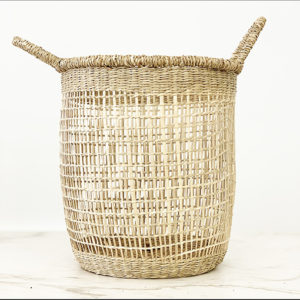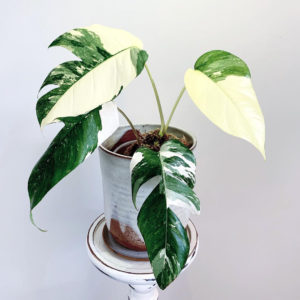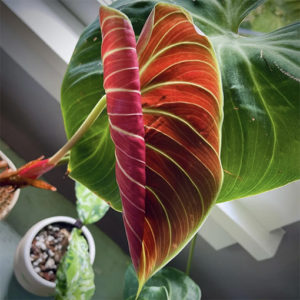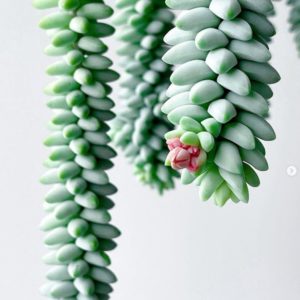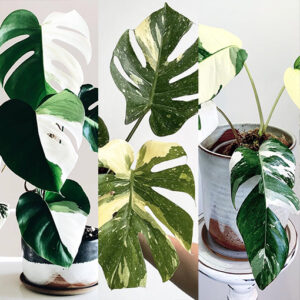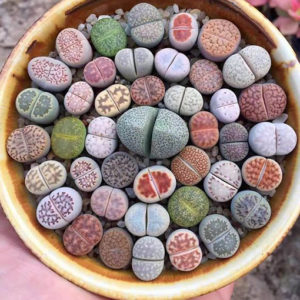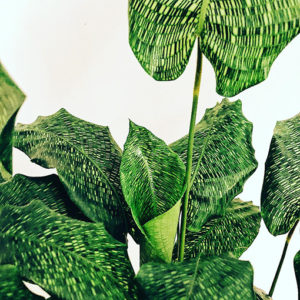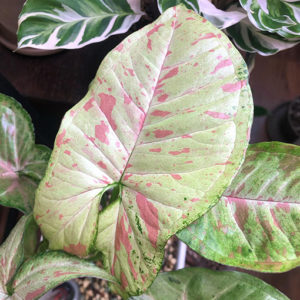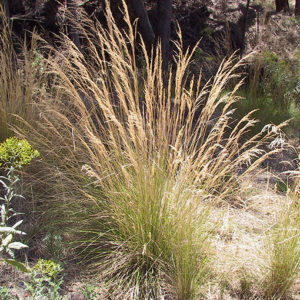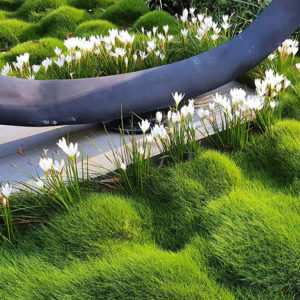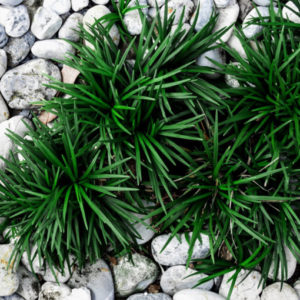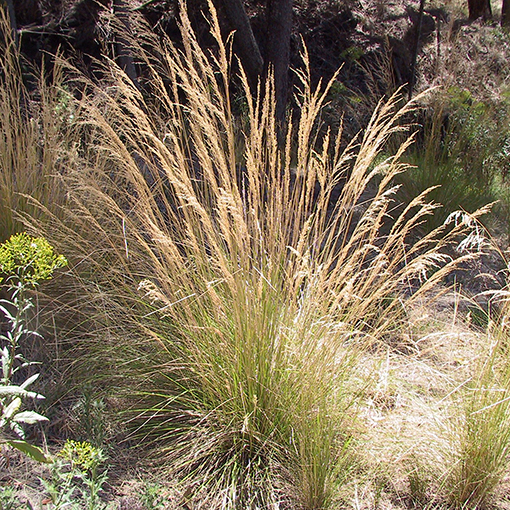
As far as Native grasses go they don’t get much better than the Poa Labillardieri aka Common Tussock Grass! A hardy, drought tolerant, grass with a charming wheat like bloom perfect for Australian or even Cottage Gardens! 😍😎
Where to buy a Poa Labillardieri — Common Tussock Grass in Australia?
Why we’re glad you asked as we do our best to have a steady supply of Poa Labillardieri in stock.
Poa labillardieri Introduction
Poa labillardieri is a tough, Native Australian Grass with an attractive, dense form with long, fine, blade-like leaves with a weeping habit. Depending on lighting it can shift from grey-green, olive-green to a bluish-green complexion and looks great when in bloom with its golden flowers not too dissimilar in looks to wheat. It is also known as Common Tussock grass. Poa labillardieri is from the family Poaceae and is well adapted to the harsh Australian climate, being drought tolerant and not fussy with soil types. It is an extremely easy care plant and is also a rapid grower, making it a popular choice in urban landscaping and major projects.
Found across Southern and Eastern Australia, including Tasmania, mainly in open forest communities and damp open areas, such as on the banks of creeks, and along shorelines and valleys. Native Grasses are extremely popular, as a low maintenance option, great along paths to create a laid-back beach feel.
Poa Labillardieri Uses
Poa labillardierei may reach a height 60-70cm and one metre when in bloom, making it an excellent option for creating an informal garden edge and an appealing show when planted in large numbers. Tall, thin stems hold delicate flower heads in plumes that bloom in the Spring and Summer. These flower heads are held above the leaves on the plant and although not flashy, are a real feature. These clumping grass species are suitable for various garden designs, from contemporary to cottage and are great to give landscapes more volume.
Ideal for use as erosion control and near water courses, as well as in woodland gardens and containers in formal outdoor locations. Making it ideal for softening rough edges as a colour contrast with other plants planted en masse or clustered together in a container.
Poa Labillardieri Temperature, Lighting and Positioning
Common Tussock Grass is well adapted to the harsh Australian Climate and once established can handle high temperatures. Poa labillardierei generally recovers quickly from fire.
Plant Common tussock grass in a location that receives full sun to partial shade; it can withstand cold and the occasional frost.
Poa Labillardieri Soil, and Fertiliser
Poa labillardieri is not fussy when it comes to soil and can even tolerate soils high in salt content. If it appears weak in the Spring, give it a dose of nitrogenous fertiliser to give it a pick-me-up. We recommend using our Plant food available here.
Poa Labillardieri Watering
The Common Tussock Grass once established is very drought tolerant. Water during warmer months whilst becoming established.
Poa Labillardieri Maintenance
Once established, it takes very little care and attention because it is low maintenance and resistant to adverse weather. Occasionally you may wish to give it a haircut if its becoming too long or unwieldly.
Poa Labillardieri Propagating
The seeds of Poa labillardierei germinate easily in the Autumn and Winter months when planted in soil that has been prepared. Young plants require consistently damp soil to germinate and flourish. The seeds are frost-resistant and may germinate at temperatures as low as 0 to -5 °C. A soil that drains well and is only moderately fertile is best for Common tussock grass.
Rapid germination and a small root ball mean the plant may quickly take hold in its new environment.
Division of the plant is another option. Reduce the height of the plant split in half.
Poa Labillardieri Vulnerability to Pests and Disease
Poa labillardierei is an extremely resilient plant and isn’t overly vulnerable to pests and disease. Grazing animals like rabbits and kangaroos can occasionally damage it.
It is also known to encourage the presence of native wildlife such as birds and insects. For more information on how to manage common plant pests head to our blog here.
Poa labillardieri Design Tips
Common Tussock Grass is quite versatile when it comes to design opportunities. It’s obviously well suited to drought tolerant, low water use gardens and Native Gardens and can look great around paths, garden edges and up against timber decks or light-coloured gravel paths and driveways. It can be used to create a beachy feel for Coastal designs. It also looks terrific amongst rocks, rockeries, pavers, steps and undulating slopes. They are nice under tree trunks and being drought tolerant can do ok, even under dominant trees that monopolise most of the moisture content. They can be used in clumps, formally or in unformal settings and can create nice colour contrasts against other foliage colours. They can even be a nice feature in cottage gardens to add texture and volume against the more showy plants and flowers.

